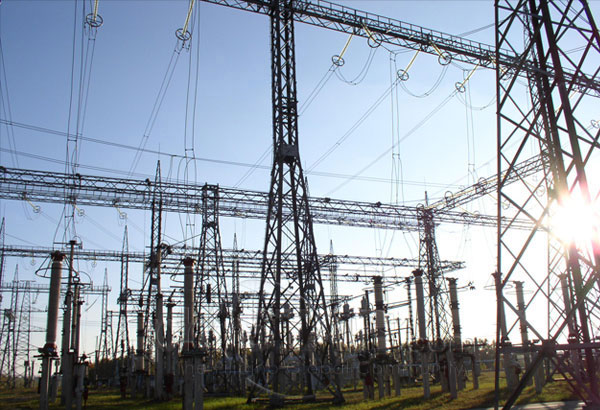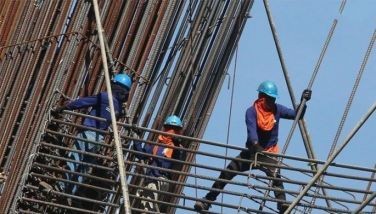Flood warning

SAN FRANCISCO – Monitoring events back home, it is with sadness that I noted the death of over 200 people in Mindanao because of a Christmas typhoon named Vinta. According to web reports, aside from the deaths, Tropical Storm Vinta displaced some 200,000 families and left hundreds missing.
Vinta struck less than a week after Tropical Storm Urduja left 47 dead and 44 missing in the Visayas. This gives rise to a question: Whatever happened to Project NOAH which was supposed to mitigate the deadly impact of such storms?
Part of the answer can be extracted from an exchange of tweets between former Comelec commissioner Goy Larrazabal and NOAH project director, Dr. Mahar Lagmay:
Gregorio Larrazabal @GoyYLarrazabal
Hi @nababaha. Whatever happened to Project NOAH? I’ve been reading articles about how many people died because of the recent rains. Couldn’t Project NOAH possibly have prevented those deaths?
Mahar Lagmay @nababaha Dec 25 replying to @GoyYLarrazabal - Sorry pero natangal po ang NOAH sa Pre Disaster Risk Assessment (PDRA) ng NDRRMC since March 2017. PDRA was formed immediately after Yolanda.
Gregorio Larrazabal @GoyYLarrazabal Dec 25
That’s a shame. That could and should have been a great tool to help LGUs. Specially considering how often the Philippines gets battered by storms.
Mahar Lagmay @nababaha Dec 25 replying to @GoyYLarrazabal – We humbly offer our services to NDRRMC just like it was from 2013 to pre-Urduja & Vinta. It’s best if NOAH information is communicated well.
Apparently the offer was not accepted. The UP scientists with the data they already have could have helped warn problem areas and save lives. Given that the government, albeit the past administration, already spent money on NOAH, it would have been a no-brainer to see how Dr. Lagmay and his team could help.
Sayang. As Dr. Lagmay puts it in a draft report he shared with me, “After the Philippines has made it through many cyclones, some as Category 5 supertyphoons, with zero or near zero casualty since 2013 (after Yolanda), we again experience a high death toll from flood and landslides spawned by the twin storms.”
How could have NOAH helped?
According to Dr. Lagmay’s draft report, “Project NOAH has strived to address both warning and response categories by setting up locally manufactured rain gauges and water level sensors all over the country. These data, which stream every 15 minutes provides near-real time information that may be used to complement forecast information.
“NOAH has also provided detailed probabilistic hazard maps for the country but is still incomplete. The availability of these maps showing the hazardous and non-hazardous areas for floods, landslides and storm surges can be used by communities at barangay level to plan their evacuation sites and evacuation routes.”
Dr. Lagmay pointed out that previously, as part of the Pre-Disaster Risk Assessment (PDRA) of NDRRMC, NOAH was involved in getting all agencies and researchers together to discuss an incoming storm and its likely impact.
“These discussions lead to the identification of municipalities that are likely to be impacted based on the forecast of PAGASA. Since, forecasts are never perfect, information from near-real time measurements and open accessible weather satellite data are used to complement the forecast information.”
NOAH tools are used to monitor the cyclone while it traverses the Philippine Area of Responsibility (PAR). The output of such monitoring is, in turn, used by NDRRMC through the PDRA system to provide “hazards specific, area focussed and time bound” warnings.
Dr. Lagmay explained that under the PDRA system, when more than 100 mm of rainfall is seen to have been delivered over a certain area, NDRRMC will have to call the disaster risk reduction officer of the municipality to explain scientifically what is happening.
Dr Lagmay pointed out that “A timeline of disaster events shows how many severe hazard events were averted since the PDRA was established . Unfortunately, NOAH ceased to be part of NDRRMC a few months before Urduja and Vinta lashed Visayas and Mindanao in December 2017.”
What went wrong?
Dr. Lagmay explains that “there are two critical facets of disaster risk reduction: 1) Warning and 2) Response. During the onslaught of Urduja and Vinta, ‘warnings’ were too general because they were province wide. This was the old system of providing warnings before the PDRA system was established in 2013 after the Yolanda disaster.
“Under the PDRA system, warnings given by NDRRMC are supposed to be hazards specific, area focused and time-bound. This type of warning is possible only through 24/7 near-real time monitoring of rainfall and river water levels, information which used to be provided by the Project NOAH team.
“For appropriate ‘response’ of communities, it is important that probabilistic (multi-scenario) hazard maps be used because they capture future hazards, which may be bigger than what the communities have experienced…”
As envisioned, Project NOAH was implemented as a more accurate, integrated and responsive disaster prevention and mitigation system, especially in high-risk areas across the country. The Project NOAH used to be the Philippines’ primary disaster risk reduction and management program. It was initially administered by the Department of Science and Technology from 2012 until January 2017, when Project NOAH was downsized and is now managed by UP.
I asked Dr. Lagmay via e-mail if NOAH could have helped to deal with calamities like the two recent typhoons.
His response: “NOAH being now in UP can’t issue warnings, we can only provide information. That was the benefit of being part of the PDRA system. We provide hazards specific, area focused and time bound information regarding imminent hazards and NDRRMC issues the warnings.
“Now that we are in UP, we can only provide information. We saw to it that the information are still available through the NOAH website and mobile tools for people to use as basis for their decisions.”
Oh well… par for the course. We have a good thing, invested taxpayer money on it and not use it thanks to bureaucratic jealousies. In the meantime, we lose lives.
Change has to come.
Boo Chanco’s e-mail address is [email protected]. Follow him on Twitter @boochanco
- Latest
- Trending































